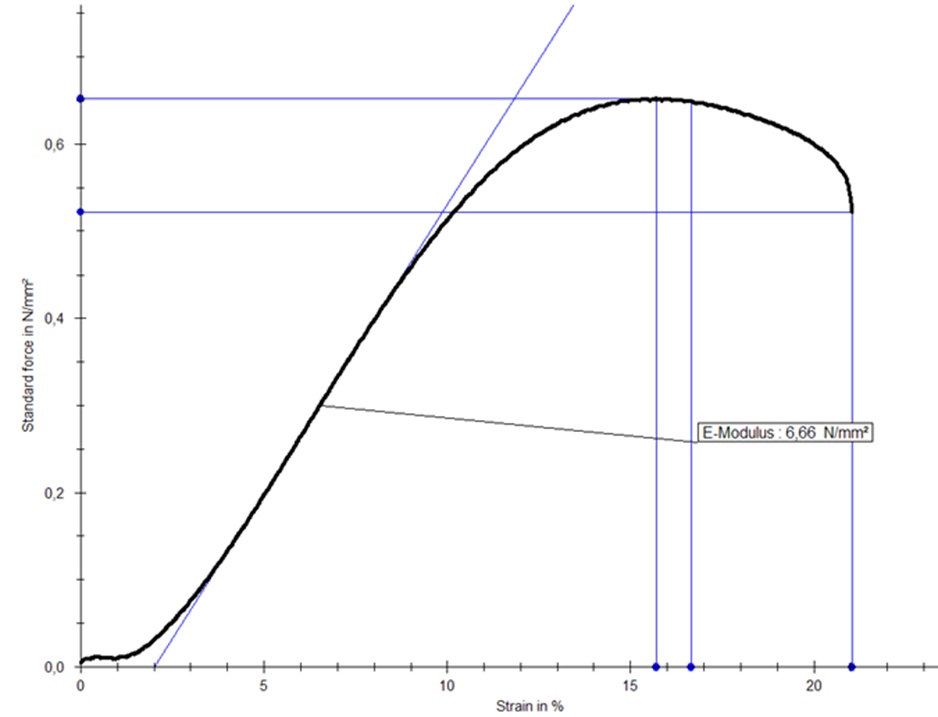RTSS videoextensometer for the determination of Young's Modulus at Tensile testsThe strain sensor RTSS videoextensometer measures with high precision the longitudinal strain during tensile test and transfers the result to the tensile test machine. The image shows the measured stress-strain curve with the calculated Young's modulus. This application example shows how an RTSS camera system can be used as a non-contact strain sensor to determine E-modules on plastics and metals. |
What is the modulus of elasticity or modulus of elasticity?
Young's modulus (also known as Young's modulus) is a measure of a material's ability to deform elastically. In other words: It measures the resistance of a material to mechanical expansion or compression. The higher the elastic modulus, the greater the resistance of the material to deformation.
The elastic modulus can be measured using various methods, including tensile, compressive and shear tests. It is usually expressed in gigapascals (GPa), megapascals (MPa) or newtons per square millimeter (N/mm²). Structural steel or S235JR, for example, has an elastic modulus of 210,000 N/mm².
Tensile test to determine the modulus of elasticity
Tensile testing is the most common method for measuring elasticity.
This type of test involves subjecting a sample of the material to a tensile force. The elongation (tensile stress) that causes this load is measured. The compression test is similar to the tensile test, except that the sample is not subjected to tension but rather to compression (crushing).
Shear testing is another common method for measuring elasticity. In this type of test, a sample of material is subjected to shear forces (forces that act parallel to each other but in opposite directions). The force required to cause deformation is then measured.
Make predictions about material behavior using the modulus of elasticity
Young's modulus can be used to predict the behavior of a material under various loads.
For example, if you know the modulus of elasticity of a material, you can predict how much it will deform (stretch or compress) under a certain load.


